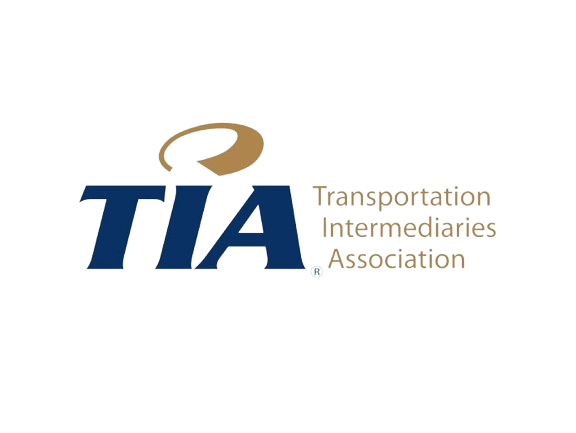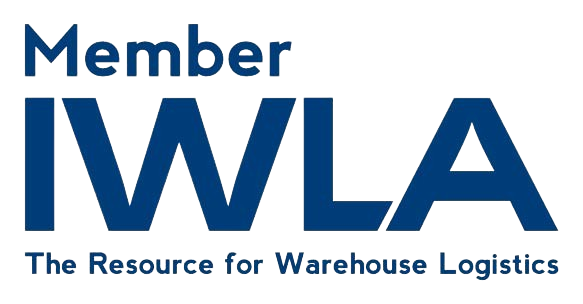Warehouse safety is an essential cornerstone of warehouse management. With e-commerce rapidly increasing in popularity, warehouse services are in demand more than ever. To ensure your workforce is safe and productive, you must have experienced safety staff and create effective safety procedures.
In this guide, we will look at the main safety challenges in warehousing and provide a comprehensive warehouse safety checklist to ensure that your employees and managers abide by industry standards.
The Importance of Safety in Warehouse Management
Understanding the importance of safety in warehouse operations is the first step towards maintaining your workers’ health and increasing awareness of the potential dangers involved. You can avoid incidents by following warehouse safety guidelines from the Occupational Safety and Health Administration (OSHA) and integrating checklists for various warehouse safety issues.
With online purchasing seeing a record increase, merchants are turning to third-party logistics companies and their warehouse facilities to store, package and ship their goods.
To accommodate the demand, warehouses are hiring more employees to perform a wide variety of tasks. Providing a safe work environment for a growing staff is vital in retaining workers and creating a culture that looks after everyone. Injuries ranging from personal injury to falls and crushing accidents put a significant strain on both the safety culture and employee-employer relationship.
Top Warehouse Safety Challenges
Warehouse operations can become dangerous quickly if the proper safety actions haven’t been addressed. Inadequate training, failure to heed hazard warnings, and improper manual lifting are among the most common safety issues that lead to warehouse injury and death every year.
Inadequate Employee Training
When it comes to power equipment operation, warehouse employees must be sufficiently trained and licensed, even if a third party needs to be hired to perform the task. Without proper training in place, warehouse managers run the risk of seeing injuries and even death increase substantially.
Lack of Awareness About Safety Protocols
Awareness of safety issues and dangers around a warehouse is the best way to proactively tackle workplace accidents. The better safety coordinators can identify dangerous situations, create a plan and communicate the plan to the workers, the safer everyone will be. This means the right people must be selected for the warehouse safety management team, and they must be able to instruct others on the dangers of warehouses and proper safety procedures.
Heavy Equipment
Forklift and other heavy equipment accidents make up a large portion of warehouse incidents that result in serious injuries. Therefore, training and licensing should be taken very seriously when it comes to operating heavy equipment.
Physical Strain on Employees
Modern warehouses require workers to perform many repetitive movements quickly throughout a shift, including standing, twisting, crouching and reaching for objects. If not performed correctly, these movements can lead to repetitive strain injuries, including muscle, tendon and ligament damage.
Ignoring Hazardous Warning Signs
Hazard warnings indicating danger along with barricades to prevent workers and equipment from entering areas or going over ledges are critical in warehouse environments — ensuring all areas are adequately lit falls under this category.
OSHA Warehouse Safety Standards & Guidelines
To ensure that safety is a priority in warehouses, OSHA provides a detailed list of required guidelines that break down the ten most accident-prone areas most frequently cited for violations. Below is a breakdown of the guidelines outlined in OSHA’s warehouse safety document.
Forklifts
About 100 employees are killed and 95,000 injured every year while operating forklifts. Forklift roll-overs account for the majority of these accidents. OSHA stresses the importance of training forklift drivers adequately and evaluating them regularly. Additionally, drivers should routinely inspect and maintain their forklifts.
Hazard Communication
OSHA states that hazard communication constitutes a large percentage of warehouse safety managers’ responsibility. Covering holes and wall openings to ensure equipment and workers don’t fall through is essential. OSHA also recommends clearly labeling and organizing dangerous goods and chemicals and correctly displaying Material and Safety Data Sheets.
Personal Protective Equipment (PPE)
Employees should be supplied and equipped with the proper personal protective equipment (PPE) required for their tasks and should be routinely trained in the equipment’s proper operation. The most common PPE required in warehouses include:
- Respiratory masks
- Hard hats
- High visibility safety vests
- Safety gloves
- Steel toe boots
Electrical Wiring Methods
OSHA includes electrical system design and wiring, mechanical power transmission, and portable fire extinguishers as areas for warehouse safety managers to pay particular attention to. It’s critical that licensed professionals, such as electrical and mechanical engineers, perform all electrical wiring and system design. The dangers posed by improper wiring can lead to severe injury or death of warehouse workers.
Fire Safety & Evacuation Plans
Having proper fire extinguisher locations and training employees on how to use them is especially important in warehouses that store flammable materials. Additionally, warehouse managers need to develop evacuation procedures and ensure workers understand the plan in the event of an emergency. To make sure that everyone understands and follows the plan correctly, conducting evacuation drills is a good habit to adopt in all warehouses.
Warehouse Safety Checklist
Checklists are a convenient way to ensure your warehouse facilities are operating efficiently and employees are performing their tasks safely. To uphold safety standards, warehouse operators need to understand the rules and procedures that cover general safety, forklift operation, and manual lifting.
General Warehouse Safety Checklist
Every warehouse has a different layout, stores different materials, and requires different types of employees. To operate efficiently, you must tailor your general warehouse safety policy to your specific needs. This means focusing on safety issues that stand out as the most dangerous or require additional attention to address. Below is a list of items that you can use to develop a general warehouse safety checklist:
- Warehouses should be well ventilated, and the temperature kept comfortable for all occupants.
- Hazards should be clearly marked, and leading edges blocked off to prevent falls or roll-overs.
- All equipment should be equipped with emergency stops or power-downs.
- Employees should receive ergonomic training and coaching to maintain realistic work expectations and take sufficient breaks to prevent overwork.
- Employees should be trained to operate fire extinguishers and be thoroughly familiar with emergency safety procedures and evacuation drills.
Forklift Operation Checklist
Forklift operation and storage, including loading, unloading and stacking checklists, can include the following items:
- Forklift operators must be appropriately trained and licensed.
- Forklift operators must always wear seatbelts, operate the forklift in approved, well-lit areas and not let anyone else ride on or in the forklift.
- Forklifts should not be operated in any way other than their intended use. This includes ensuring the lift is not overloaded and not lifting loads too high.
- Forklift operators must ensure other workers in the area are aware of their presence by using lights, horns and backup alarms as necessary.
- Place heavier items on lower shelves and ensure they are straight and evenly stacked.
- Store dangerous goods in designated areas.
- Clearly indicate maximum stacking distance on shelving and adhere to height limitations.
- Distribute loads on shelving to balance their load across the shelving unit.
Manual Lifting Checklist
Manual lifting causes a significant number of worker injuries every year. Workers should learn proper lifting techniques to complete these tasks safely and effectively. Some points on an ergonomics lifting checklist can include:
- Use power equipment to lift materials whenever possible.
- Teach workers proper lifting techniques and remain diligent in coaching them.
- Use your legs to lift and keep your back in a neutral position.
- Ask for assistance if a load is too heavy.
- Ensure all areas of the warehouse are appropriately marked and well lit.
- Enforce the wearing of proper personal protective equipment at all times.
- Allow injured workers to take sufficient time to recover and return only when fully ready.
Warehouse safety management is an essential part of a site safety program and can help supervisors and managers quickly make sure their workers perform their tasks safely with all appropriate measures in place. Simply having a brief list of safety tips for your warehouse can aid supervisors in maintaining safety as they perform their daily tasks.
Improve Warehouse Operations With Crown LSP Group
Crown LSP Group is a full-service third-party logistic provider that is here to meet the needs of any business. Whether your business needs additional storage space with temperature control and security systems or shipping at a moment’s notice, Crown LSP can provide a tailored solution to meet your needs. In addition, Crown LSP Group can assist you in your efforts to improve your warehouse operations.
Located in Rocky Mount, North Carolina, Crown LSP is strategically positioned to freight any shipment to three-quarters of the U.S. population within 12 hours. This means you can rely on Crown LSP to store your materials or products while you use your commercial floor space for more productive means. Contact Crown LSP Group today for more information or request a quote.







